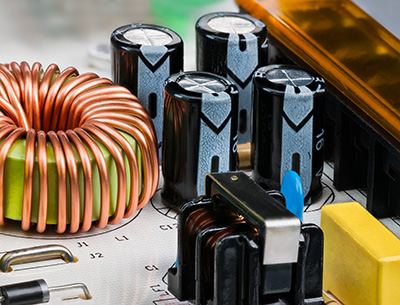EMC Question of the Week: November 15, 2021

Electrolytic capacitors have a relatively large capacitance for a given package size compared to ceramic capacitors making them well-suited for use as,
- X-capacitors in AC power filters
- Y-capacitors in AC power filters
- decoupling capacitors in DC power buses
- all of the above
Answer
The best answer is “c.” Electrolytic capacitors are polarized. They have a positive terminal (anode) and a negative terminal (cathode) and must be operated with a higher voltage on the positive terminal at all times. For this reason, they are unsuitable for filtering AC power.
On the other hand, electrolytic capacitors are often the best choice for filtering applications where there is a constant DC bias. They are widely used for DC power line filtering and DC power bus decoupling.
Electrolytic capacitors have a relatively high equivalent series resistance (ESR) compared to ceramic capacitors. This can be an advantage at lower frequencies where the ESR helps to damp unwanted resonances due to component parasitics. However, for high-frequency printed circuit board decoupling applications, the high ESR of electrolytics is generally undesirable. In these applications, Class 2 ceramic capacitors are usually a much better option.
Have a comment or question regarding this solution? We'd like to hear from you. Email us at
